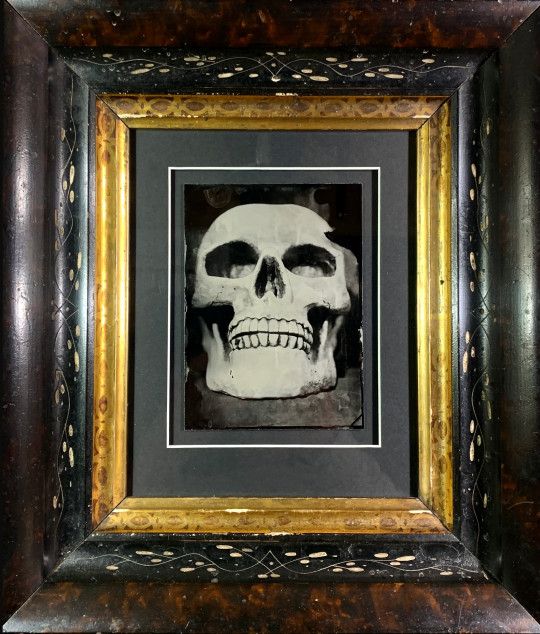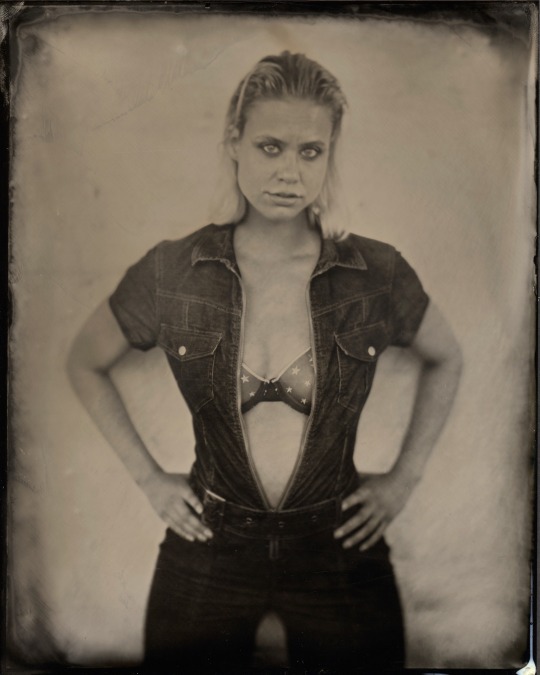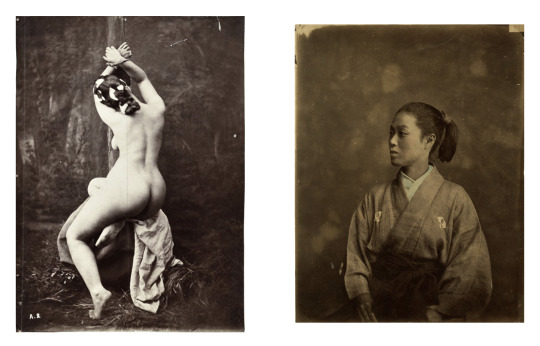#collodion process
Explore tagged Tumblr posts
Text

"TORONTO MAN APPEALS "PROHIBITIVE" TARIFF," Toronto Star. July 28, 1933. Page 1. ---- Manufacturer Tells Board Import on Collodion "Injustice" to Industry --- Special to The Star Ottawa, July 28. - Engravers Specialties of Toronto, manufacturers of collodion and engravers' supplies applied to the tariff board to-day for cancellation of tariff item "761-collodion."
W. E. Thorne, the applicant,through counsel, stated, "I am engaged in manufacturing collodion in bond, which carries the necessary bond fees, supervision fees and all the rest of the excise duties that go to make up a business of this nature. I am a one-man concern, returned soldier, who has tried to re-establish himself without asking any assistance from the government in any way whatever. It is this that prompts me to speak out for what I call an injustice to the government and to the manufacturers of collodion in Canada. I am prepared to list costs in Canada as compared with costs in the U.S.A. and you can judge for yourself the great Injustice being done to the government and the collodion manufacturers.
"Do you think it proper to charge a Canadian manufacturer a total of 68 cents in duties, excise and bond fees for each and every gallon of collodion sold in Canada, whereas an engraver can import collodion at a lower cost than the price of manufacture in Canada? When such collodions are imported, instead of the government getting 68 cents per gallon they get 24 cents, all included, so I leave it to you, sir, if you do not think that this item should be changed immediately.
"In an interview with the customs branch I was advised that the tariff item outlived itself when collodions first manufactured in this country, as a Canadian manufacturer should not be discriminated against, but protected. Immediately you will want to know what benefit I expect to receive if this revision was made. It is this. I only expect to be put on an equal basis with were other manufacturers. The corporation importing the majority of collodion into this country have a million-dollar plant, but it doesn't pay them to manufacture in this country, as it can be done so much cheaper in the U.S. If this material were imported under the proper tariff item which is item. No. 220 instead of No. 761, immediately you will see the benefits to the government in both excise and customs."
The board concluded the Bathurst Power and Paper Co. hearing, the case standing for further consideration. Suggest 35 P.C. M. J. Patton for engravers specialties said the present duties were 15 per cent. British preference, 17 1/2, intermediate and general. The applicant asked that the item be cancelled and a separate item be made carrying a higher rate of duty, and suggested 35 per cent.
It was pointed out that the duties on the raw material going into Canadian collodion were 35 per cent. of the cost while the protection given on the finished 'product was only 17 per cent. The profit was only 5 percent. Judge Sedgwick: "From these cost figures it looks as though you could make 25 cents a gallon more profit by charging $4." There was no opposition appearing to the application and the case closed, to be taken into consideration by the board. Bowron Bros. Ltd., Hamilton, applied for the re-classification of ripe figs in syrup. All other figs were imported under a special item using the word "figs" while these figs were"pushed" into "fruits preserved in syrup."This fruit was brought in from California in gallon cans and thenre-packed into small containers.
"These figs are not produced in Canada," said Arthur Bowron, "and the high commissioner in London, whom we wrote, has been unable to find any of these ripe figs within the empire." He suggested figs would be a good item to trade in the possible reciprocity pact with the United States. The present tariff was 100 per cent.and he suggested they might be allowed in duty free as a concession. The chain groceries were selling their product but the high duty made the price to the consumer very high. Commissioner Hebert: "Figs of this type are produced in Smyrna." Empire Figs Salty Mr. Bowron: "If we can get empire figs we would rather, but theyare usually packed in salt and unsuitable for what we use them." Chairman: "For lack of imagination we often take figs on the dining car." Mr. Bowron: "Those are the kind we put up but they are imported and cost around 40 cents." He admitted they had only brought in three experimental shipments so far. Chairman: "Well, what good are you going to do the country if you get the duty down. Is it going to make the figs in the train cheaper?" Mr. Bowron: "It should." Chairman: "If you are allowed to bring these figs free in bulk you spend $388 in Canada in wages and material and you reduce the price to the Canadian consumer." Mr. Bowron: "Yes, ten cents a can is cheaper." Chairman: "Then that's the whole story." The case was taken under consideration. The application of the Jones Tent and Awning Co., Ltd., of Vancouver, for a duty on venetian blinds was laid over, the applicants not being ready to proceed. This completed the second session of the tariff board. The next hearing being the woollen hearing, the date of which has not been set.
#ottawa#tariff board#excise taxes#customs officials#collodion#small business ideology#small business owner#nitrocellulose#dry plate photography#collodion process#import duties#canada in the british empire#figs#great depression in canada#capitalism in canada
0 notes
Text

*Self Portrait from the Future* Tintype - One Kindred Spirit Vintage Frame
#tintype#wet plate collodion#skull#death#self portrait#photographers on tumblr#original photography#vintage#alternative processes#darkroom
81 notes
·
View notes
Text

Anneke on tin.
13 notes
·
View notes
Text

sombras piantadas, France.
#blanco y negro#collodion#flores#flowers#fotografia analogica#analog photography#black and white photography#chambre photographique#nature#naturaleza#portfolio#black and white#bnwphotography#bnw zone#alternatif process
5 notes
·
View notes
Text
Yeah, no, the original subject of this silly little vent post crossed my dash again, and I can no longer rise above it.
That's not Jartnell!
How has he made it to the final that delightful wee poll when it's not even him!!!
I want to be a hater about something right now but I'm rising above it and I think that's very brave and sexy of me.
#Vent post I guess?#In all seriousness I know it's just a bit of fun and it's not that deep#I'm not intending to come for anyone and hope no one comes for me#But yeah#I'm no expert on photographic processes but they are in my professional wheelhouse as a conservator#And I say with almost complete certainty that that can't possibly be a daguerreotype of Jartnell because it isn't even a daguerreotype#It looks much more like an albumen or possibly a collodion print to me#Both processes that weren't invented pr widely available until several years after Jartnell was cold in the Arctic ground#I'm no longer brave or sexy about this I'm sorry
9 notes
·
View notes
Note
Thank you for your attention! Regarding the universe Obscura: in one of the posts, in my opinion, there was already an answer regarding the technical development of their society. However, it is interesting to know (although this is probably a bit of a stupid question) if they can already take photographs? For example, using the collodion process? If so, it would be interesting to know the reaction guys, if Vesper had the opportunity to invite them to take a photo as a souvenir. Well, or if this is not possible, then capture yourself in a joint portrait?
(Sorry if anything is unclear, a translator was used)
The basic chemistry to take photos definitely exists and is known about at this point, yeah, especially since there's a lot of chemistry work done under the mountain. The catch is that it needs a lot of light to take a clear picture, so photography is basically unheard of at the marketplace itself. And since the marketplace is so taboo, folks on the surface are reluctant to play with the technology.
We'll answer the joint portrait ask separately, for organisation reasons.
55 notes
·
View notes
Text
Reviewing the Armies: A Good Omens Civil War AU by CemeteryAngel725

Thank you so much to @shipper-of-all-things for helping with the cover image!
Rated E, 5,573 words
3rd installment of the Coming into Focus series
Read here on AO3!
Summary:
It is May of 1865 and the war is over, or nearly over. Aziraphale has relocated to Washington, DC, and he is counting down the hours until he can be reunited with Anthony. When they meet again, sparks fly.
Excerpt:
Time to prepare. Aziraphale reached for a glass plate, his hands trembling. Oh, it wouldn’t do to drop a plate at all. They were so fragile, and there was so much room for error in the process. Aziraphale had heard a rumor that Alexander Gardner had broken his last photographic negative of President Lincoln — had cracked it while pouring the developer and had thrown the plate away after pulling just a single print, not knowing the significance of what he had. Yes, best be careful.
Somehow, Aziraphale managed to pour the collodion steadily, his years of experience coming to his rescue. He handed the plate to Adam and prepared another, just in case his timing was off. Then it was time to wait, watching the minutes tick by on his watch as the soldiers streamed by on the street. Aziraphale crossed his arms, holding his elbows to steady himself.
There. Oh, there.
Anthony was riding alongside his regiment on a glossy black stallion, his scarlet curls peeking out from under his kepi and catching the sunlight, a burst of fire in a sea of blue uniforms. His back was straight and his shoulders thrown back, looking every inch the conquering hero. Aziraphale’s heart swelled. All these months of worry, praying for Anthony’s return, imagining the worst, keeping every perfect memory as a talisman in his heart. And here Anthony was, safe and strong and gloriously whole, right before Aziraphale’s eyes.
All the love to the denizens of @goodomensafterdark!
#good omens#good omens fanfiction#good omens fic#good omens fic recs#aziracrow#aziraphale#crowley#writers of after dark#good omens smut#american civil war
43 notes
·
View notes
Text

Left: Louis Bonnard, étude de nu, 1875 ca. France cm 15 x 11. Albumen print from the original glass negative.
Right: Baron Raimund von Stillfried. "Swordswoman in Fencing Outfit." 1875. ca Japan., cm 27 x 21. hand printed albumen print from wet collodion negative., captioned 'Maestra di Scherma' on the verso
Collezione Ettore Molinario aims to explore through photography the aesthetic representations of five states and processes involved in the symbolic construction of personal and sexual identity.
#Louis Bonnard#étude de nu#Baron Raimund von Stillfried#Swordswoman in Fencing Outfit#Swordswoman#1875#Collezione Ettore Molinario
31 notes
·
View notes
Text

Khadija Saye (1992-2017)
Dwelling: in the space we breathe series
These self-portraits explore the spiritual practices as a way of connecting ancestral homelands. Saye performs a series of rituals using sacred objects that combine her African, Christian and Islamic heritage. In Nak Bejjen, Wolof for cow horn, Saye's head is bowed in payer while a figure outside the frame holds a horn-like object to the back of her neck. The image evokes a technique used by Gambian healers to draw impurities from a person's body. Saye commented that "whilst exploring the notions of spirituality and rituals, the process of image making became a ritual in itself'. She used a labour-intensive wet collodion process, which is easily affected by elements outside the artist's control. Saye explained, 'within this process, you surrender yourself to the unknown, similar to what is required by all spiritual higher powers: surrendering and sacrifice".
26 notes
·
View notes
Text
Tintype collodion developing process: fascinating to watch it change from negative to positive
@n_oeil
#vintage photography#tintype#collodion#blackandwhitephotography#noiretblancphotographie#portrait photography
22 notes
·
View notes
Text
A great amount of trial and error was expended to find a preservative that would slow the drying and prolong the sensitivity of collodion negatives. Some of the experimental preservatives that were concocted were more ingenuous than ingenious, as Gernsheim has recounted (61, 324): he called it "the culinary period of photography." Preservatives included caramel, camphor, coffee, gin and water, ginger wine, glycerine, honey, Iceland moss, lager beer, laudanum, liquorice, malt, magnesium nitrate, milk, morphine, morphine nitrate, nux vomica, raisin syrup, raspberry syrup, salicine, sherry, sugar, tannin, tea, tobacco (several brands), treacle, vinegar, whey, wormwood, and zinc nitrate. Whiskey was not listed in any of the four references that were consulted, an unexpected and mystifying absence. Perhaps it went into the photographer instead of the coating mixture.
- Photographs From The 19th Century: A Process Identification Guide, William E. Leyshon
7 notes
·
View notes
Text










Pablo Fanque's Fair is the project in the field of visual arts based on photography that combines historical and contemporary techniques in aspiration to present in images a beauty that is physically tangible. Motive force of Pablo Fanque's Fair is the wish to penetrate in magical realism of surrounding reality instead of meaningless routine. The project's creativity is inspired by the highest meanings of life: Beauty, Love and Peace.
The project's name was inspired by the line from the song of The Beatles “Being for the Benefit of Mr. Kite!” where John Lennon quotes the old circus poster. This name reflects the “fairground” diversity of genres and themes in the body of work, as well as the use of historical techniques and alternative photographic processes (namely oil pigment print, wet plate collodion), employment of antique cameras and lenses, implementation of manual techniques on tangible media.
#photography#art collective#photomagazine#culture#art#bnwphotography#medium format#analog photography#film photography
6 notes
·
View notes
Text







Photographs by Patricio Reig, Argentinian by birth, but Milanese by adoption. A new book by 5 Continents Editions.
Daniel Isaacs ( In the world of photography, he works under the name of Patricio Reig) studied architecture in Bogotá and did a Masters degree on modernism at the UPC in Catalonia. His time is divided between literature, photography and the history of these two areas. He has worked within the world of historical research into photography and design, going into the origins of photography. Patricio Reigs passion for literature gave rise to the unpublished collection of poetry Las cosas de vivir (That's Life, 2009) and his first novel Un hombre que hacía retratos (2015). He comes from a deeply literary family and is a direct descendant of Jorge Isaacs, author of the first great Latin American novel of manners Maria (1867). Patricio Reig specialises in alternative processes such as wet collodion, ambrotypre and daguerreotype.
12 notes
·
View notes
Text


A little more Wonders Unknown art from me- a portrait of the co-captains of the 1872 Revenge expedition, both original and wet collodion process photograph-style. This one comes from chapter 4, and you can find the fic here!
#ofmd#our flag means death#ofmd fic#ofmd fanfiction#ofmd fanart#mermaids#jules verne vibes#historical au#ofmd reverse big bang
10 notes
·
View notes
Text
The Early Days of Astrophotography
During class we learned about the early days of Astrophotography. When we first started talking about it, I did not expect high-quality photos at all. I was expecting the same as the early days of the original camera (low-quality, and not much detail showing), but what we looked at are shockingly detailed! Even compared to today's standards. You can see in the attached photos that the stars and surface of the moon are incredibly detailed.
In the first image, it is an example of the wet collodion process. Which involves cutting a piece of metal or glass, and exposing it to a multitude of chemicals (including egg-whites), and finally, exposing it to your target (What you want to capture), for a few minutes, and finally letting it dry. This would leave you with something that looked like this. It is a photo-negative, but when inverted, it is a clear image of the stars.


In this second image, it is another example of the "wet collodion process", except this time- it is the moon. The photographer would have to keep the sheet of glass or metal aimed directly at the moon, even while it was moving in the sky.
Moon image credit: ("Mercurio" https://www.flickr.com/photos/agustinbarrutia/6358462243 )
3 notes
·
View notes
Text





Today in 1839, Louis Daguerre announces his daguerreotype photographic process to the French Academy of Science. This is considered the first successful form of photography, available to the public. In collaboration with Nicéphore Niépce, Daguerre invented the technique in the 1830s. They discovered that a copper plate coated with silver iodine when exposed to light in a camera, fumed with mercury vapor and made permanent by a solution of common salt would produce a permanent photo. A great number of portraits were made in the mid-19th century by this technique. The daguerreotype photo process would be replaced by the wet collodion process around 1851.
#histoire#history#history in the making#history is awesome#history of science#history stuff#historyposting#today in history#history lesson#connecticut#history photos#photography#my photos#photoshoot#photooftheday#history will say they were best friends#history is all you left me#history lover#portrait#history has its eyes on you#history of music#usa#history repeats itself#history is fun#history today#history rant#history era#history aesthetic
2 notes
·
View notes